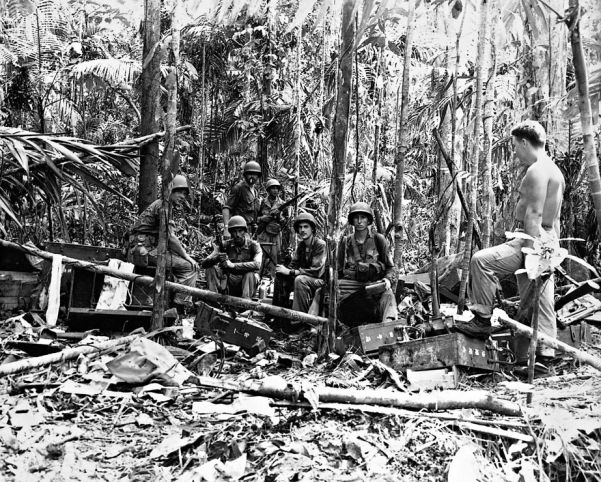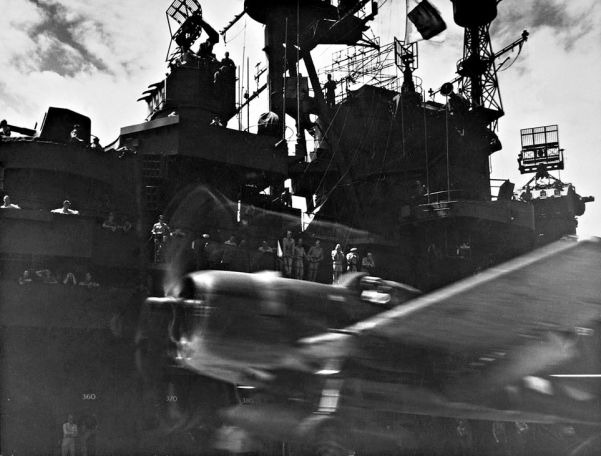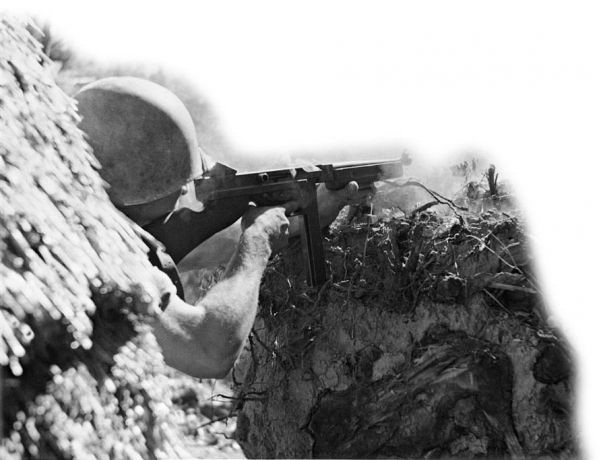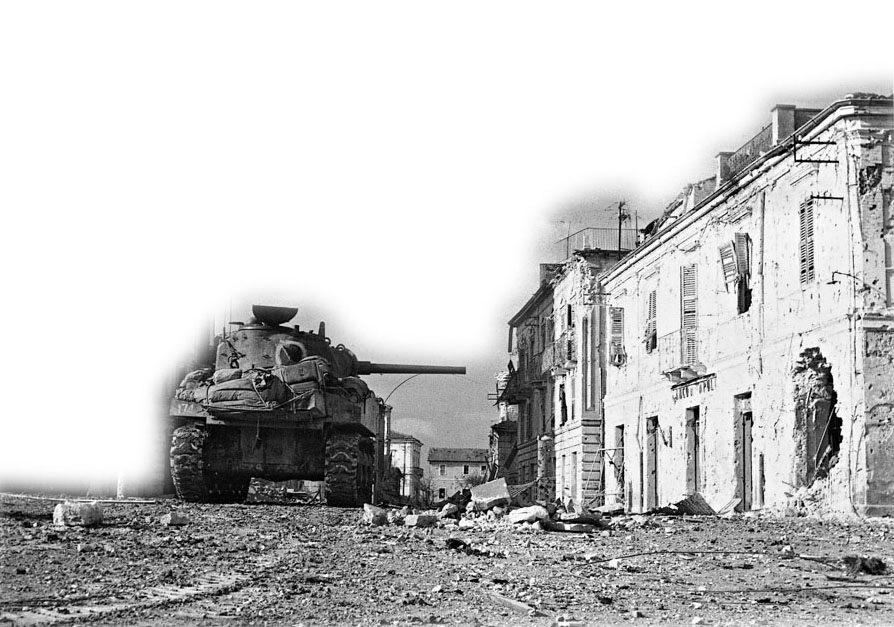1 November
Pacific, Solomons

US forces land on Bougainville; their final objective in the campaign. The island is of strategic importance as it offers the Allies airfield sites that can be used for operations against the Japanese base at Rabaul. The island is defended by 40,000 troops and 20,000 sailors. Most of these are concentrated in the south but US forces land farther west at Empress Augusta Bay, where there are fewer defenders.
1-2 November
Sea War, Pacific
A Japanese force of three heavy cruisers, one light cruiser, and six destroyers attempts to disrupt the Bougainville landings at Empress Augusta Bay. A lack of radar and overcomplicated maneuvers enable US Task Force 39 to sink a light cruiser and a destroyer. Two heavy cruisers and a destroyer are damaged. Only one of Task Force 39’s 12 vessels is damaged by the Japanese.
5-11 November
Sea War, Pacific

US Rear Admiral Frederick C. Sherman’s Task Force 38, including the heavy carrier Saratoga and light carrier Princeton, attacks Rabaul. A surprise attack by 97 aircraft damages eight cruisers and destroyers commanded by Vice Admiral Takeo Kurita. A second air attack by 183 aircraft, launched from the heavy carriers Bunker Hill and Essex, plus the light carrier Independence, hits Rabaul on the 11th. One light cruiser and a destroyer are sunk; five other destroyers and light cruisers are damaged. The Japanese also lose more than 55 aircraft during the raid and their counterattack.
6 November
Eastern Front, Ukraine
The Soviets recapture Kiev. The Seventeenth Army is trapped in the Crimea as Adolf Hitler orders the region not to be left. Two bridgeheads - at Kiev and southwest of Kremenchug - have been created by the Red Army for the offensive to liberate the western Ukraine.
November 10
Mediterranean, Aegean Sea
The island of Kos is now under German control and British destroyers shell the craft anchored in the harbor. Despite the attack, the Germans sail for Leros on the 12th. Shore batteries and infantry counterattacks attempt to halt the invaders. Strong air support and an airborne assault help the Germans to stabilize their positions.
15 November
Mediterranean, Italy
The Supreme Allied Commander in the Mediterranean, General Sir Harold Alexander, orders the Fifteenth Army Group, comprising the US fifth and Eighth Armies, to rest and reform after fighting against determined German delaying tactics. The war in Italy is proving to be very attritional.
Sea War, Arctic
Britain resumes its Arctic convoys.
16 November
Mediterranean, Aegean sea
Germany completes the capture of Leros and defeats the British attempt to seize the Dodecanese. Poor planning and enemy air superiority have led to the failure of the operation. Britain sustains more than 4800 casualties, and loses 20 vessels and 115 aircraft. Germany has 12 merchant ships and 20 landing craft sunk, and suffers 4000 casualties during the short campaign.
18-26 November
Pacific, Solomons

At the Battle of Piva Forks on Bougainville, the Japanese desperately try to hold a key strongpoint known as Cibik Ridge, but US troops finally capture the heavily-fortified position.
18 November
Air War, Germany
A five-month British bomber offensive on Berlin begins. Over 6100 people are killed, 18,400 injured, and vast areas of the city are destroyed. Fifty diversionary raids are made on other cities.
20-23 November
Pacific, Gilberts
US Task Force 53 lands 18,600 troops on Tarawa and Betio following several days of preparatory bombardment. Tarawa’s network of bunkers, containing some 4800 Japanese defenders, manages to escape destruction.
The landings are hampered by this determined garrison and also because amphibious craft are grounded on the reef around the islands, which means the troops have to wade ashore. This makes them easy targets to hit.
Over 1000 US troops are killed before the island is captured on the 23rd. Of the garrison, only 110 Japanese soldiers survive. Nearby Makin Island is captured by the US 27th Infantry Division during the same operation.
20-24 November
Mediterranean, Italy

The Allies resume the offensive toward Rome but halt at the defenses of the Gustav Line. The British establish a small bridgehead across the Sangro River by the 24th.
22-26 November
Politics, Allies
British Prime Minister Winston Churchill, US President Franklin D. Roosevelt, and China’s Chiang Kaishek meet in Cairo, Egypt. They mainly consider postwar planning for China and Burma. A second conference, between December 4-7,draws up a schedule for the Pacific ‘island-hopping’; campaign.
24 November
Sea War, Pacific
A Japanese submarine sinks the US escort carrier Liscombe Bay off Makin Island, claiming 644 lives.
25 November
Sea War, Pacific
At the Battle of Cape St. George, a Japanese destroyer-transport force is attacked by five US destroyers after landing troops at Buka, next to Bougainville. The Japanese lose three vessels during the last surface action in the Solomons.
28 November
Politics, Allies
British Prime Minister Winston Churchill, US President Franklin D. Roosevelt, and the Soviet leader Joseph Stalin meet in Tehran, Iran. Top priority is given to Operation Overlord, the cross-Channel invasion of German-occupied Europe, and a landing in southern France, Operation Anvil, in May 1944. The Soviets have been lobbying for the opening of the Second Front for some time.
